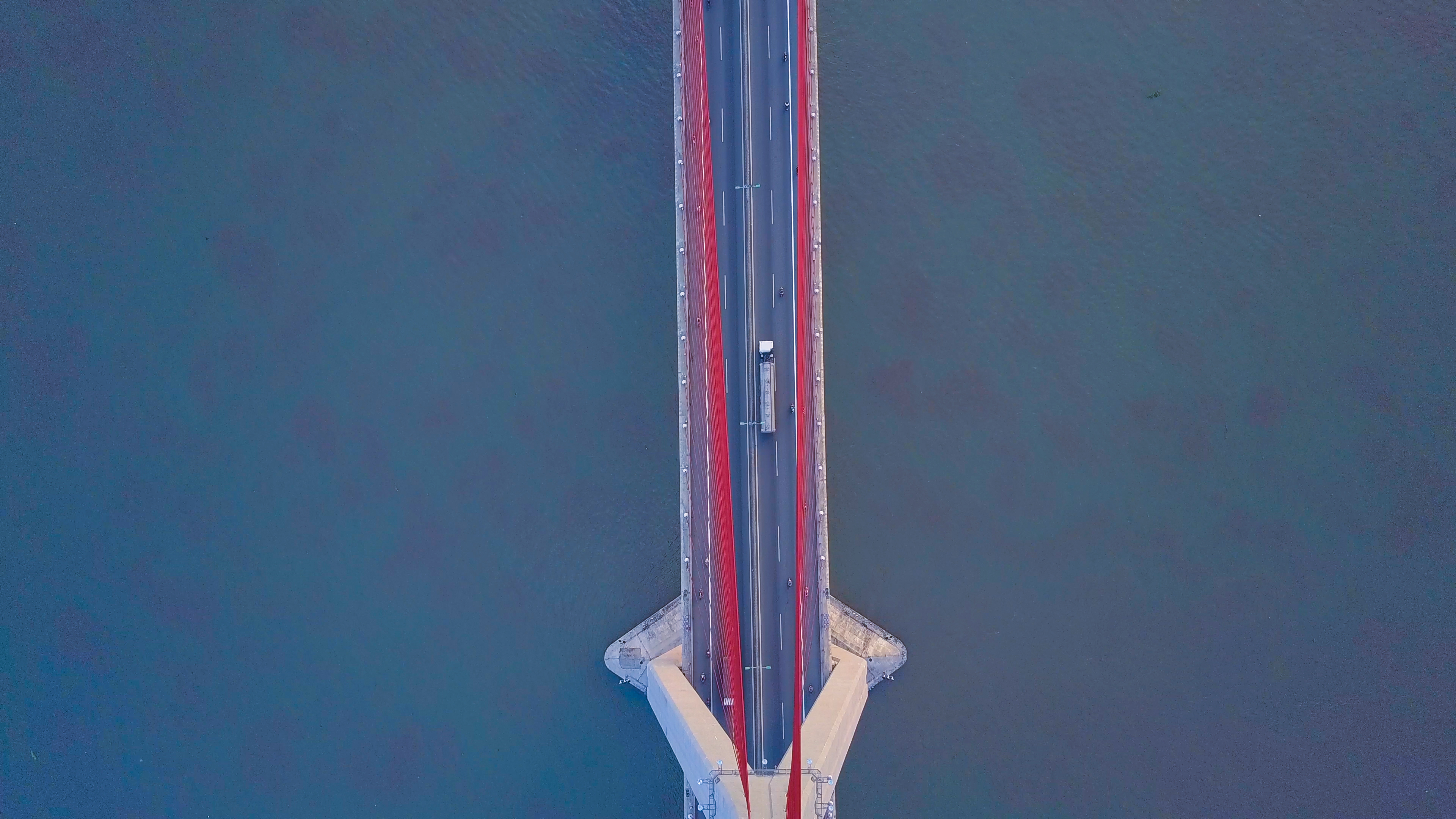
Cinematic shot of a bridge near Can Tho (Photo credit: Helivideo)
Over the past three decades, Vietnam has come a long way in charting a path toward a sustainable and inclusive future. Determined to maintain and even accelerate this progress, the government has been making big investments in its transport infrastructure to keep up with the country’s rapid economic growth and highly ambitious development goals.
The impacts of a changing climate are only heightening the urgency of strengthening Vietnam’s transport infrastructure— including the vast network of bridges which provide a vital economic link and mode of travel in this country crisscrossed by rivers and canals. As a result of extreme weather, exacerbated by climate change, the country has been experiencing an increasing number of severe and sometimes fatal accidents involving temporary bridges that have collapsed during monsoon flooding.
Recognizing the need to tackle this challenge, the government of Vietnam, in partnership with GFDRR, is implementing a pilot for the design and construction of climate-resilient, ultra-high-performance concrete (UHPC) bridges. UHPC is a new class of highly durable building material which is more resilient to weather-related deterioration than conventional materials.
RESULTS IN NUMBERS
Nearly 200 officials trained in international best practice on climate-resilient bridge construction.
A key first step is the ongoing preparatory assessment of the financial and technical requirements of UHPC bridge construction. Once completed, the assessment will inform the development of a handbook detailing comprehensive and country-specific guidance for UHPC bridge construction. A preliminary life-cycle cost analysis has been completed, which will be critical in planning UHPC bridge construction, operation, and maintenance costs. Results from the analysis indicate that the investment costs of UHPC bridges will be comparable to that of traditional concrete bridges in Vietnam.
In keeping with the national government’s commitment to ensure that this initiative generates livelihood opportunities, the preparatory assessment is also looking into the feasibility of using Vietnamese materials in the production of UHPC, as well as the capacity of local manufacturers to produce this material.
GFDRR has also been supporting government efforts to bolster expertise on climate-resilient bridges. Nearly 200 officials from agencies such as the Ministry of Transport and the Directorate for Roads of Vietnam participated in workshops on best practices for UHPC application to bridge construction, which included a high-level knowledge exchange in Tokyo with Japanese experts.
These preparatory efforts set the stage for the next phase of this initiative: the design and construction of pilot UHPC bridges in three provinces representing different topographies. Construction of one of these bridges has just been completed, while the remaining two bridges are now nearing completion. The government plans to evaluate the outcomes and modify its handbook accordingly, prior to scaling up this initiative elsewhere in Vietnam.
